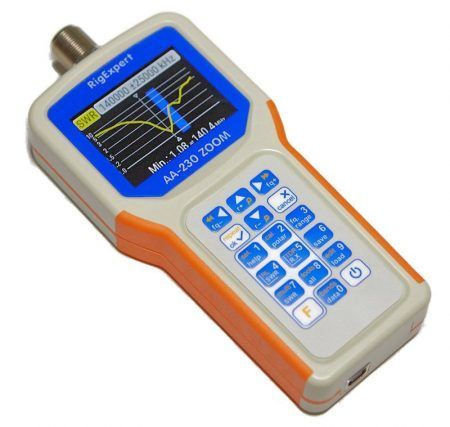On the Amateur/Ham Radio subreddit, a poster asks:
I’m new to HF and reading my FT-450D manual while waiting for the supplies to build a dipole, and I have a question. If some HF radios show the SWR while transmitting, what is the purpose of using a separate antenna analyzer? I’m assuming that the analyzer provides more information or shows the SWR of multiple bands. Is that correct? Thanks!
As usual on this subreddit, he’s gotten some very good answers:
An antenna analyzer lets you tweak the design of your antenna right at the antenna itself without connecting it to the radio and gives you instant feedback if you need to lengthen or shorten the elements, the tuning stub, etc. It is a much faster/easier process (if you are into building antennas) than using your rig to do so. And yes, it gives you more info – such as impedance….
The SWR bridge in most rigs are not terribly accurate but good enough. In Icom radios at least the circuit the SWR is derived from is actually the fold-back circuit that reduces output when the SWR gets high to protect the power transistors.
An analyzer does more than just SWR, it will tell you the resistive and reactive components at a minimum. The better ones have graphing functions, can sweep frequency ranges, do smith charts, measure 1/4 and 1/2 wave stubs, coax velocity factor, interface with software running on a PC so you can save and review etc. The RigExpert analyzers do all that stuff.. Invaluable if you like experimenting with antennas.
Some antenna analyzers can draw a nice graph of SWR versus frequency, so without the hassle of taking a lot of readings you can say “hmm, the swaaar is low just below the amateur band, lets try making this antenna slightly shorter”
One aspect of this is that some antenna analyzers can measure complex impedance.
A SWR of 2:0, in a 50 ohm system, could mean the antenna impedance is 25+j0 or 100+j0 or 50+j36 or any number of other impedances.
If you know the antenna impedance at a particular frequency then you can calculate component values for a matching circuit.
My take on this issue is that antenna analyzers provide much more functionality than the SWR bridges built into transceivers. Sure, you can tune an antenna by making SWR reading on your transceiver, but it’s going to take you a lot longer than it would with an antenna analyzer. Even if your analyzer doesn’t have a fancy display, you can easily change the operating frequency, note the SWR reading, and determine if an antenna is too long or too short. And, you don’t have to run up and down stairs to make a measurement on your transceiver.
I don’t know about the accuracy. It would be interesting to compare the reading from an antenna analyzer with the reading from a built-in SWR meter. My guess is that the antenna analyzer would be a little more accurate. After all, the purpose of the built-in SWR bridge is to protect the rig’s final transistors, and that being the case, the designers might be a little more conservative about the readings.
I always advise students in my Tech classes to consider purchasing an antenna analyzer, especially if they’re going to be playing around with antennas. Not only is it a very practical thing to have, it’s an educational tool as well. You learn a lot about antennas by tinkering with them and noting the changes in measurements.

No comments:
Post a Comment